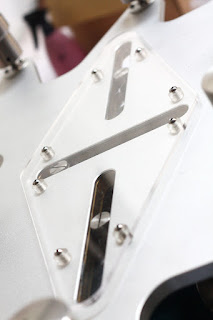Pilling is a fabric surface characterized by little pills of entangled fiber clinging to the cloth surface and giving the garment unsightly appearance. The pills are formed during wear and washing by the entanglement of loose fibers which protrude from the fabric surface.
Under the influence of the rubbing action these loose fibers develop into small spherical bundles anchored to the fabric by a few unbroken fibers.
So, how can I test the Pilling?Martindale abrasion tester may be used for pilling test of any fabric. The normal samples holders are replaced with light weight square holders, which are keyed so that they may have vertical movement but cannot turn on their axes.
The Martindale tester is a versatile instrument capable of multiple abrasion and pilling tests.It uses precision components to deliver the exact abrasion or pilling movement required by all international and retailer standards.
2、Then rubbed against each other (source sample).
3、Two pressures are used : 2.5 cN/cm knitted fabric.
4、6.5 cN/cm for woven and upholstery fabric.
5、In place of std. abradant, the fabric sample is placed in the lower holder.
6、If the degree of pilling is different on the upper and lower holder, the upper specimen is assessed.
7、The number and timing of the cycles depend on the type of fabric tested and would be laid down in the relevant specification.
Grade 4 Weak formations of pills.
Grade 3 Moderate formations of pills.
Grade 2 Obvious formations of pills.
Grade 1 Severe formation of pills.
Under the influence of the rubbing action these loose fibers develop into small spherical bundles anchored to the fabric by a few unbroken fibers.
So, how can I test the Pilling?Martindale abrasion tester may be used for pilling test of any fabric. The normal samples holders are replaced with light weight square holders, which are keyed so that they may have vertical movement but cannot turn on their axes.
The Martindale tester is a versatile instrument capable of multiple abrasion and pilling tests.It uses precision components to deliver the exact abrasion or pilling movement required by all international and retailer standards.
The pilling test steps by Martindale abrasion and pilling tester
1、The specimens are mounted on large (bottom) and small (top) specimen holder.2、Then rubbed against each other (source sample).
3、Two pressures are used : 2.5 cN/cm knitted fabric.
4、6.5 cN/cm for woven and upholstery fabric.
5、In place of std. abradant, the fabric sample is placed in the lower holder.
6、If the degree of pilling is different on the upper and lower holder, the upper specimen is assessed.
7、The number and timing of the cycles depend on the type of fabric tested and would be laid down in the relevant specification.
PILLING GRADES:
Grade 5 No or very weak formation of pills.Grade 4 Weak formations of pills.
Grade 3 Moderate formations of pills.
Grade 2 Obvious formations of pills.
Grade 1 Severe formation of pills.

评论
发表评论